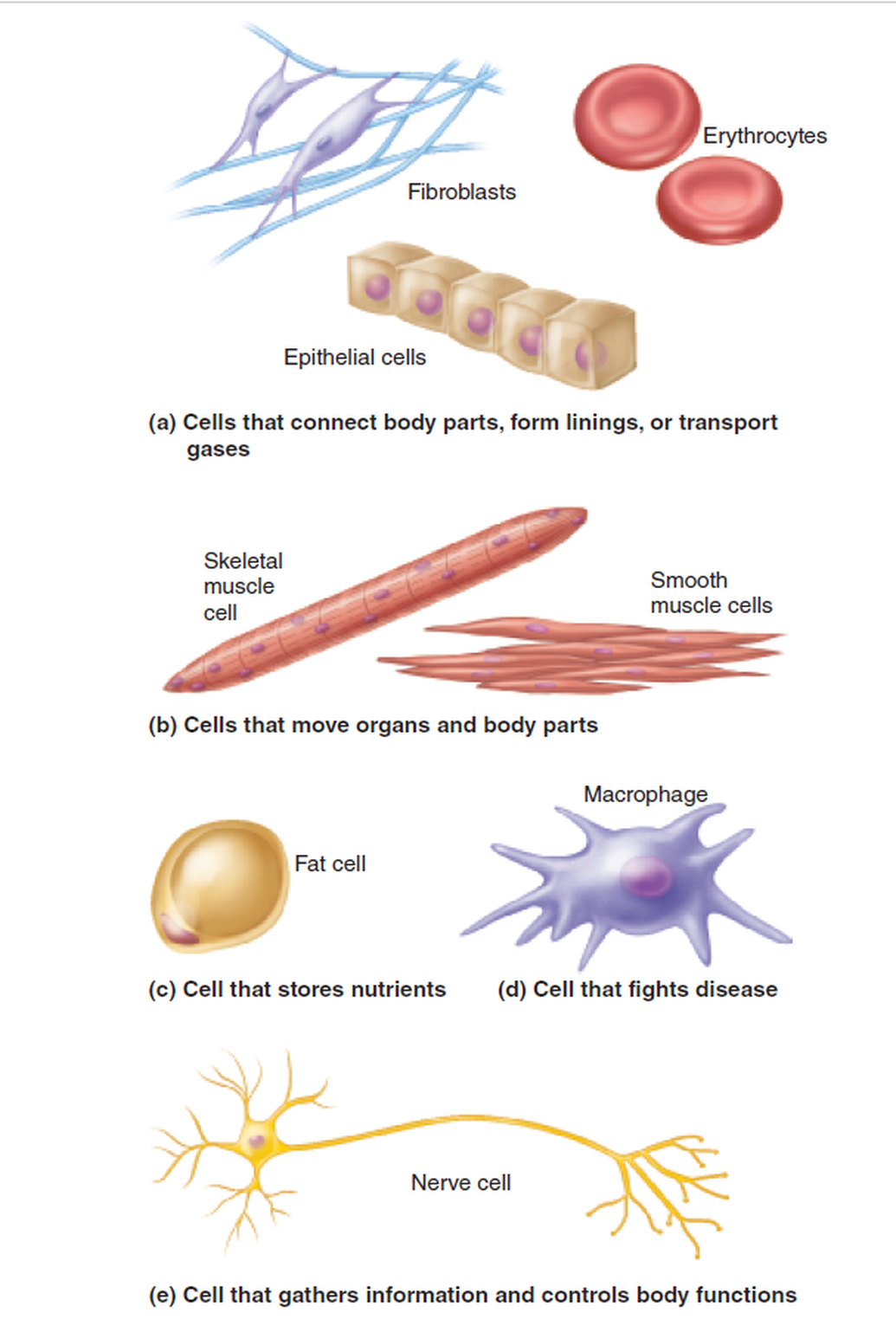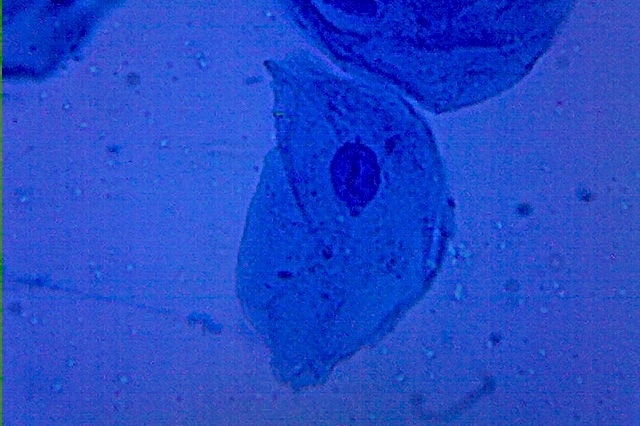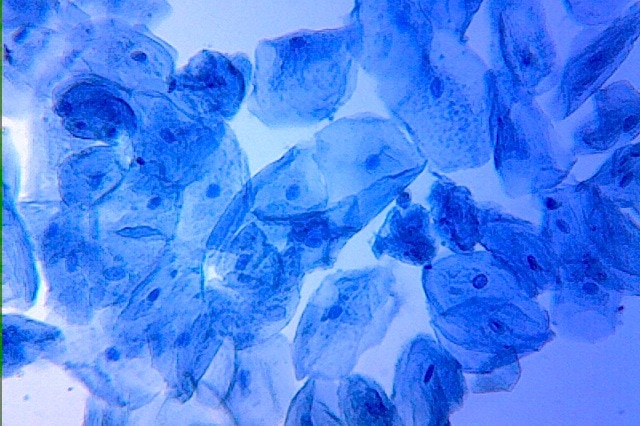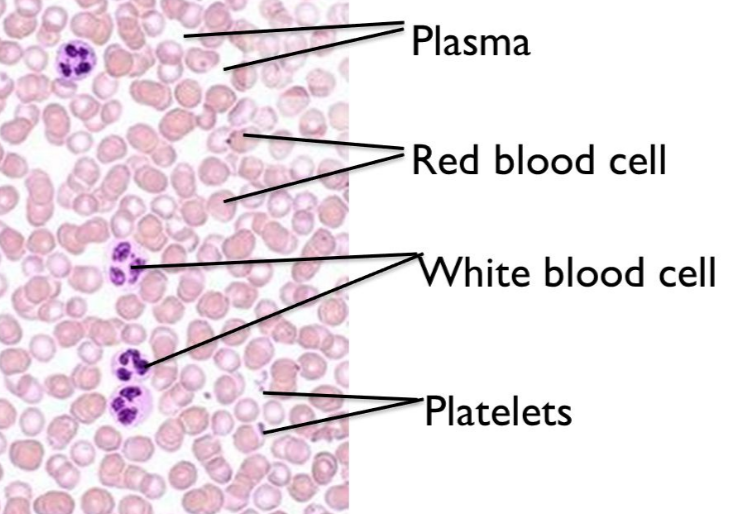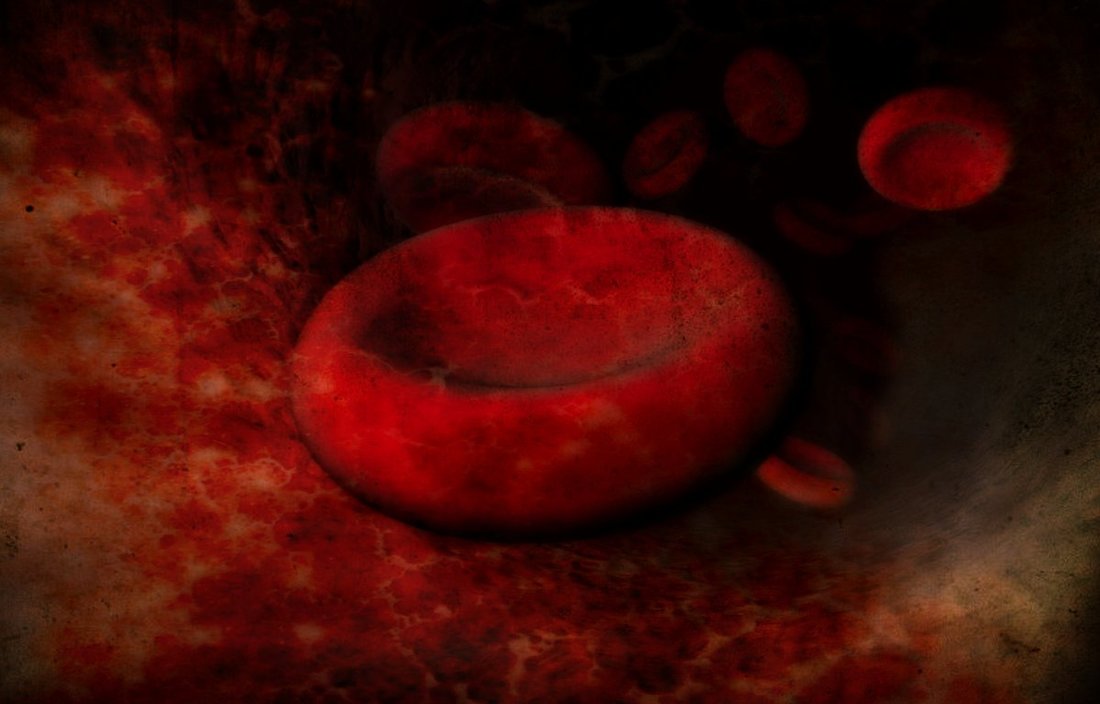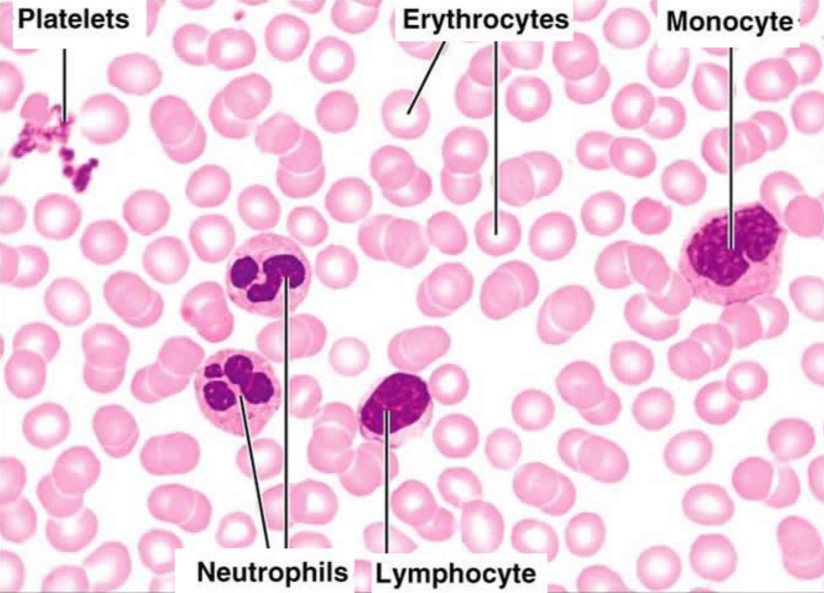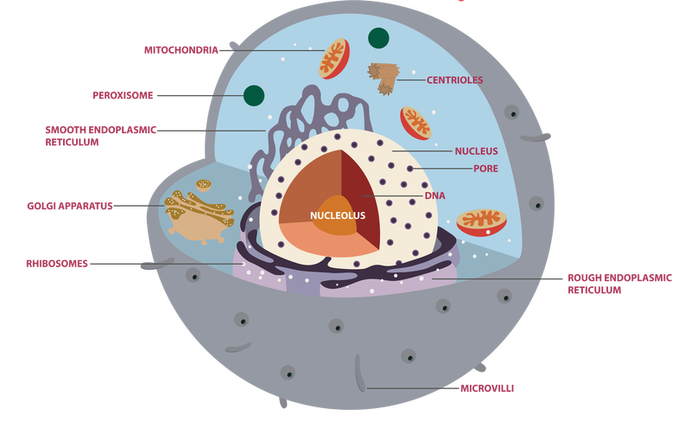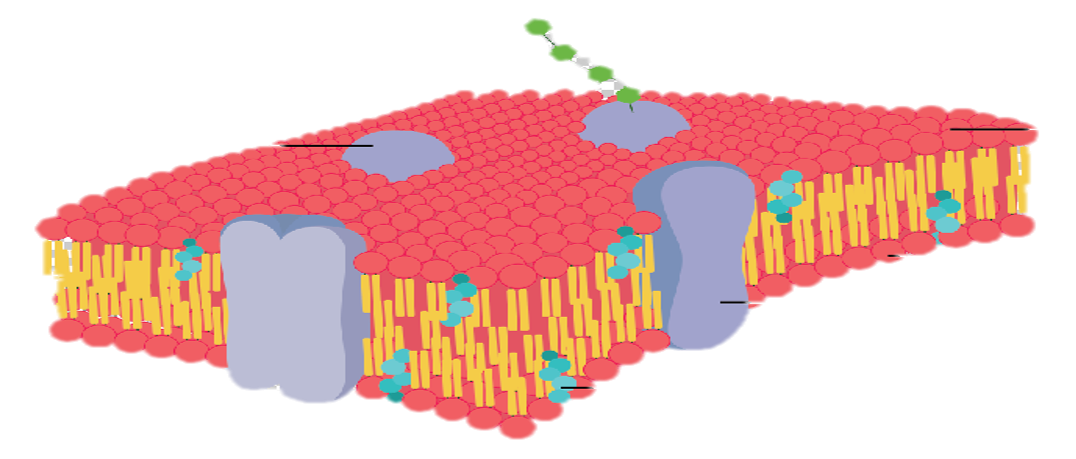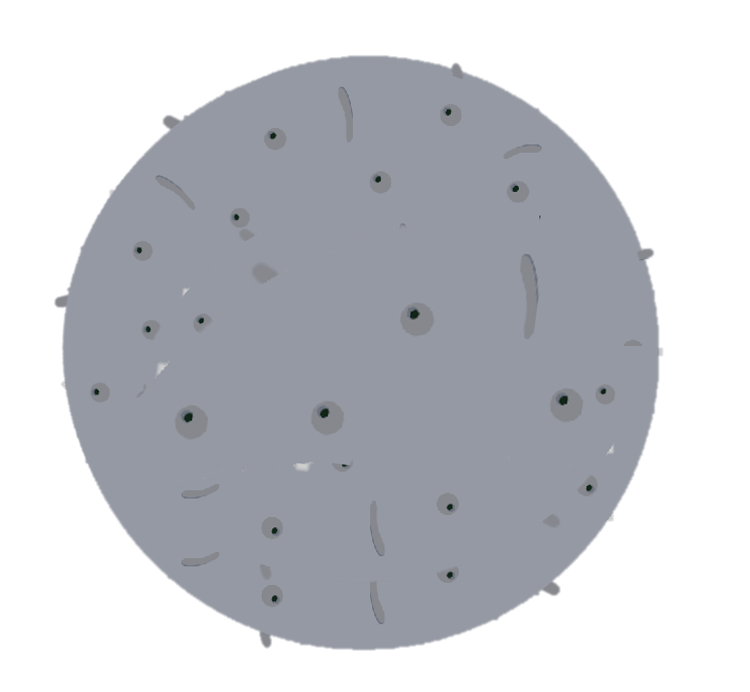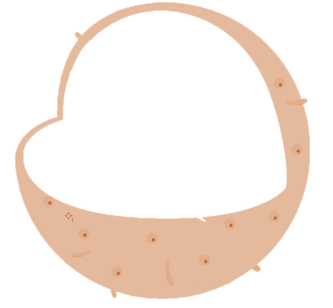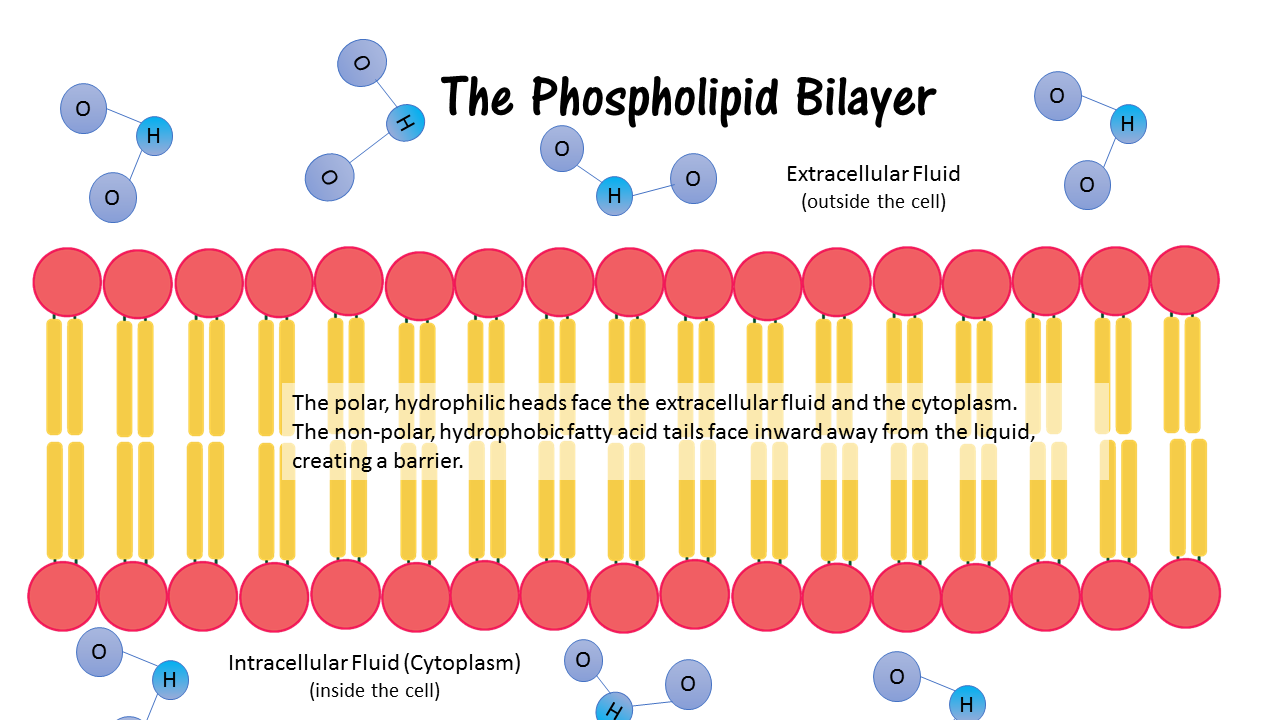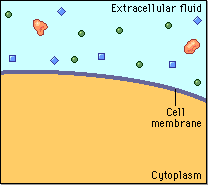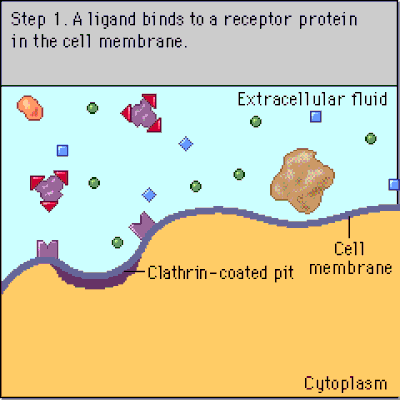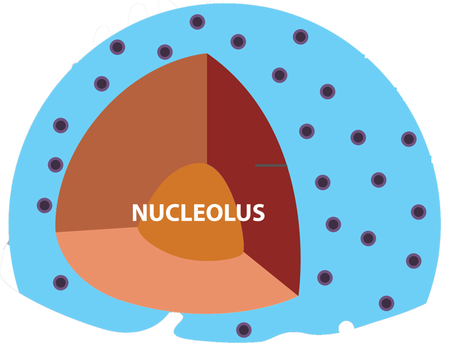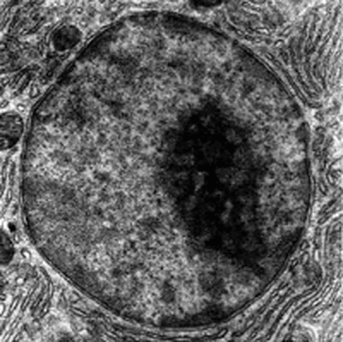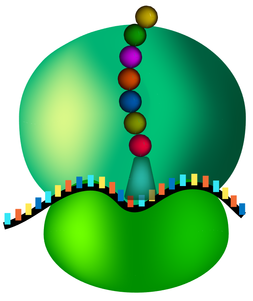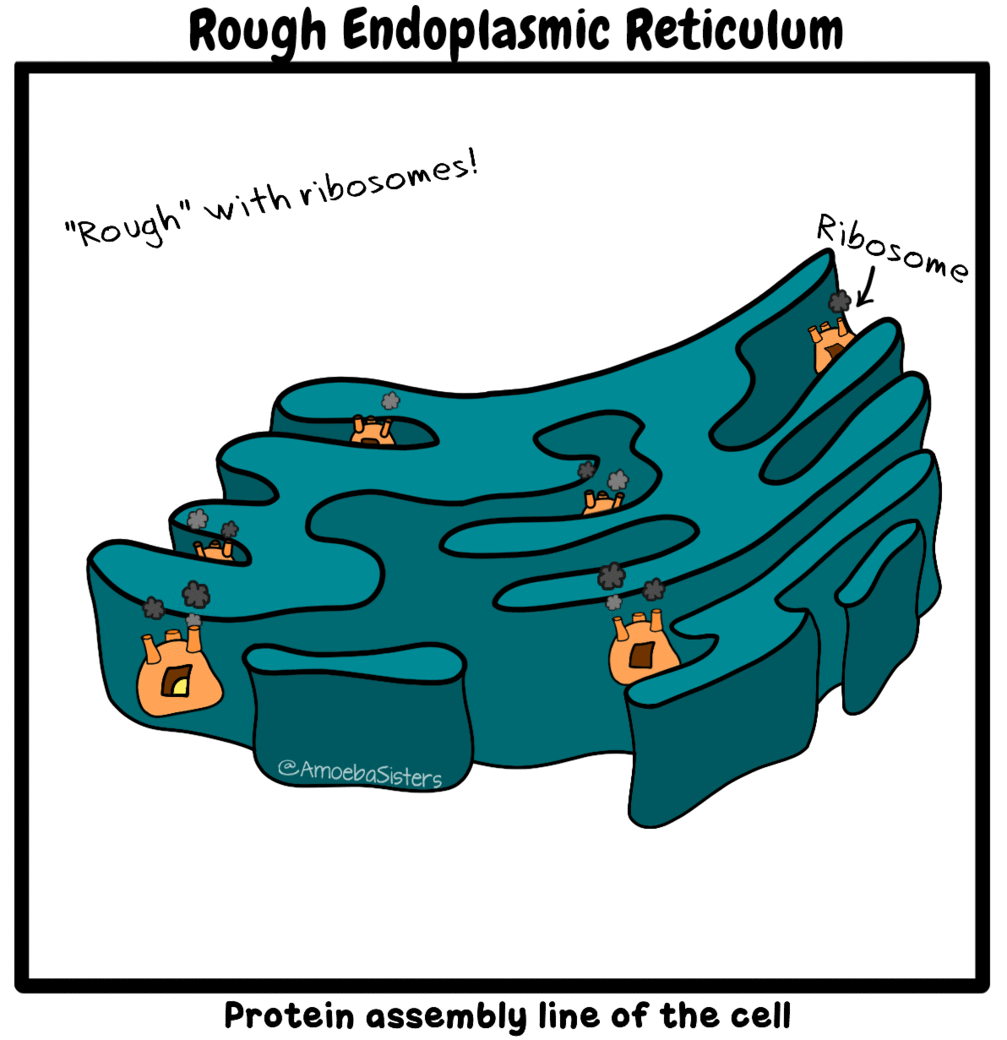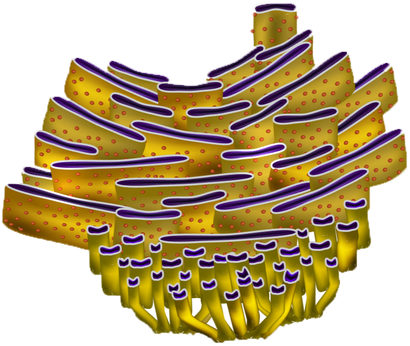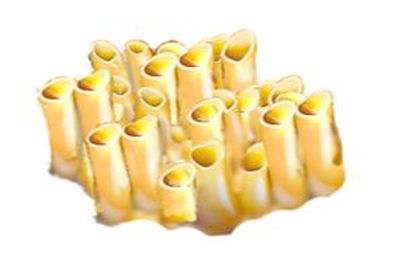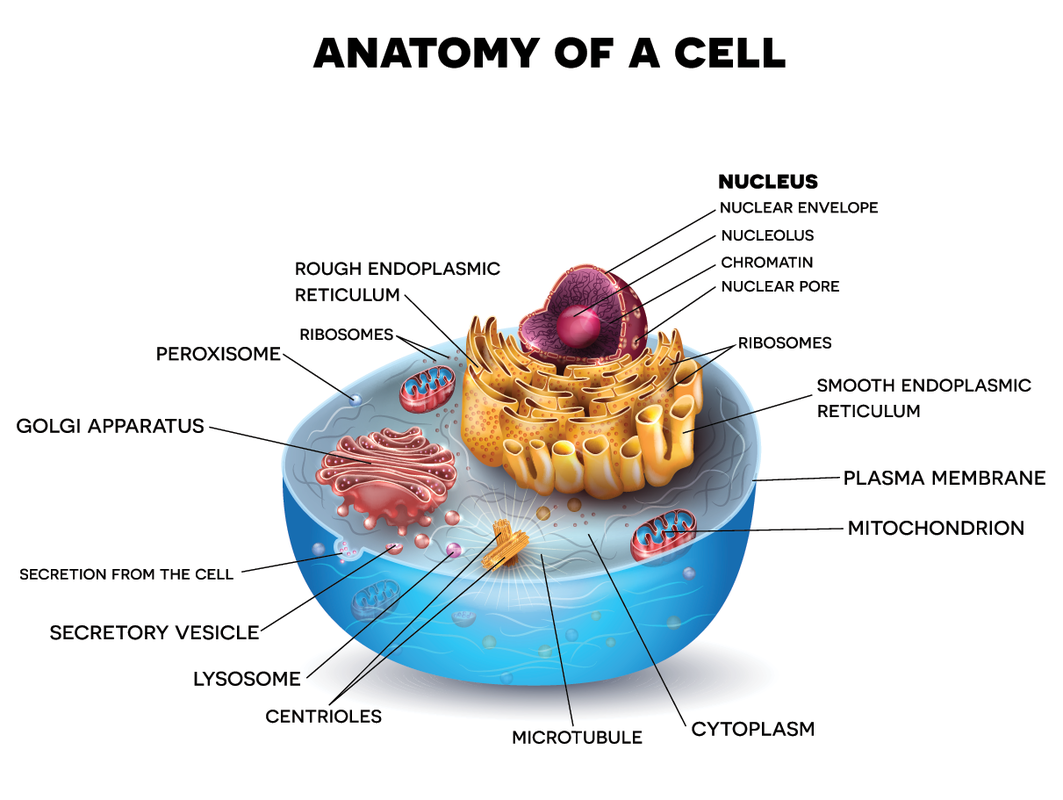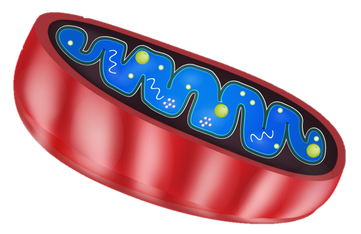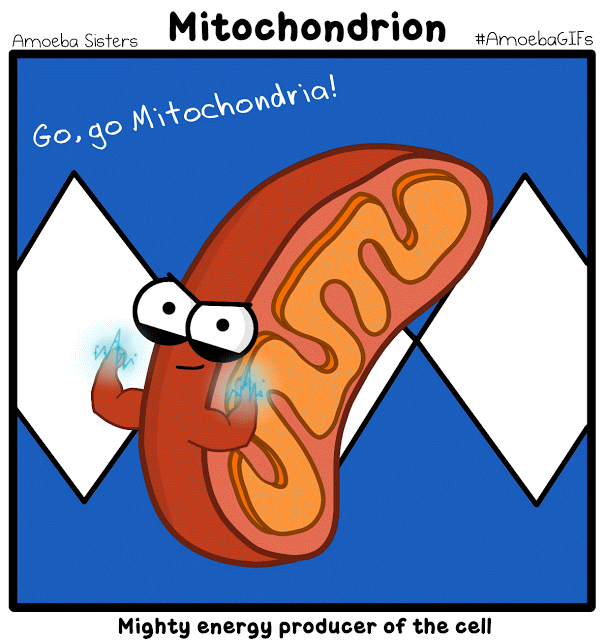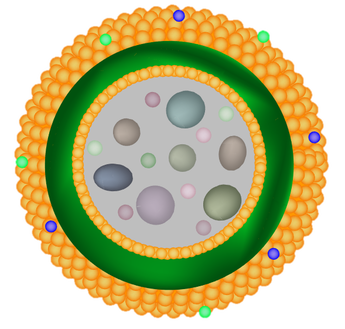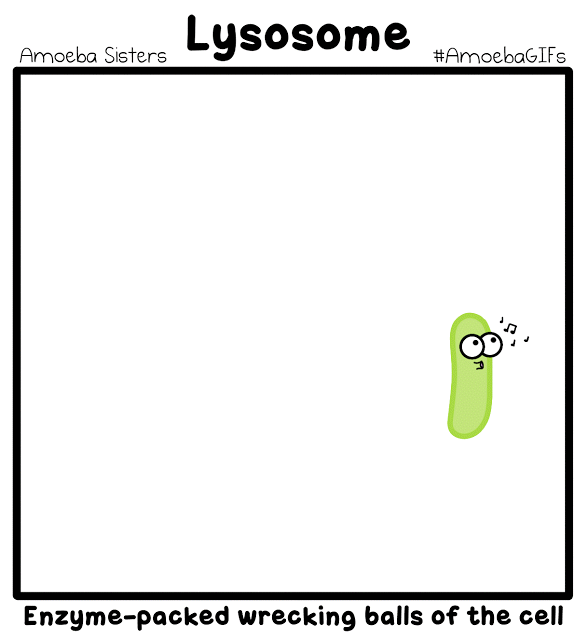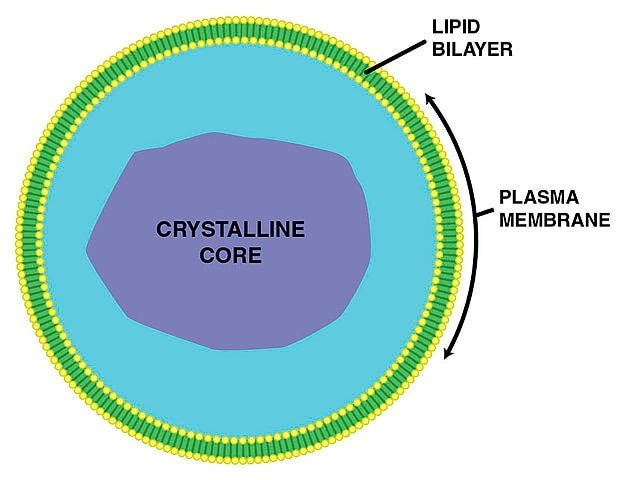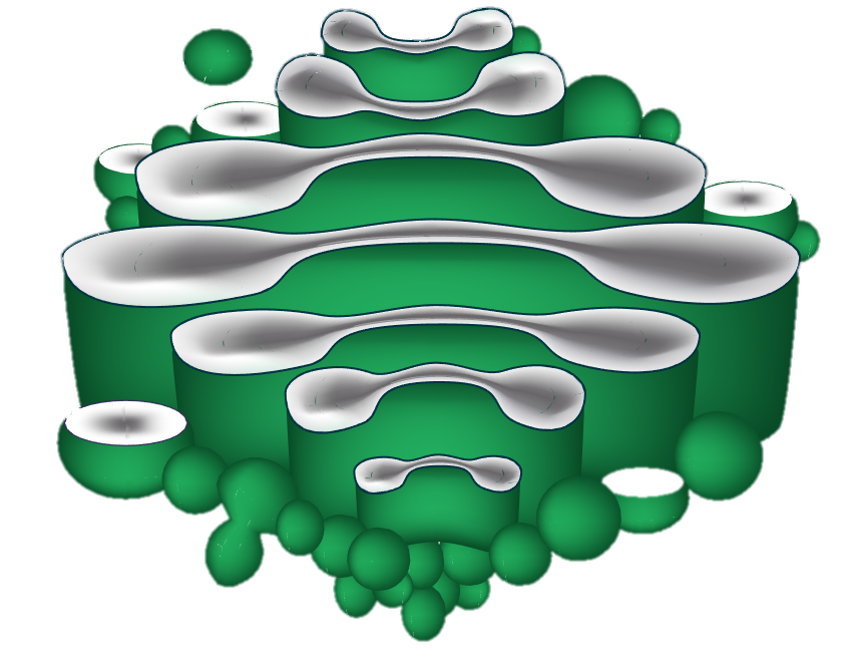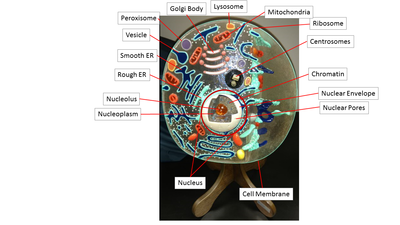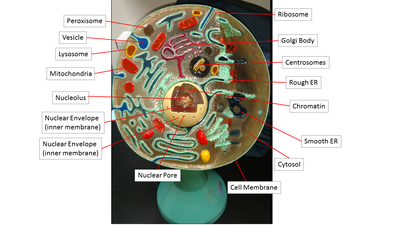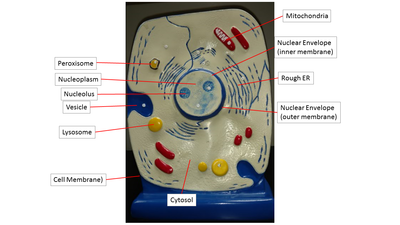THE CELL PORTAL
|
|
What Do the Cells of Your Body Look Like?
In textbooks, we see these beautiful, colorful diagrams of nice, neat organelles behaving nicely and color-coded for all the world to see. However, when you are observing cells on a prepared slide in lab, you see a lot less detail. Let's look at what you will see under your microscope.
Epithelial Cheek Cells
Epithelial cells are non-uniform round cells. The nucleus will take up more of the nuclear stain so you can distinguish the nucleus from the cytoplasm. Also, a darkened small spot within the nucleus may become visible. This area is the nucleolus.
Red Blood Cells
Blood is a specialized body fluid. It has four main components: plasma, red blood cells, white blood cells, and platelets. The main function of red blood cells (RBCs) is to transport oxygen to the cells using hemoglobin molecules and to get rid of carbon dioxide from the cells.
Cool Cells IN ACTION!
White Blood Cell with Red Blood Cells
Neurons
Regions of the Cell
The Cell Membrane (Plasma Membrane)
- The Main Function of the Cell Membrane is Regulation of Transport -
The cell membrane is also called the plasma membrane. You can think of the membrane as the "skin" of the cell. Anything outside of the cell is considered "extracellular" and the contents inside the cell are considered "intracellular". The cell membrane protects the cell by creating a barrier between what is inside the cell and what is outside the cell.
Phospholipid
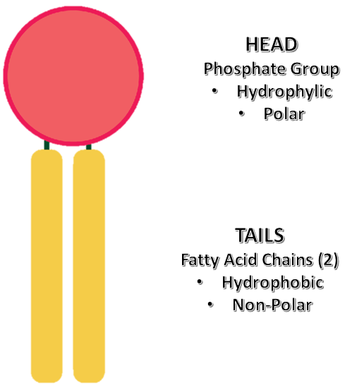
The phospholipid bilayer of the cell membrane has a unique structure. It is made up of an inner layer and an outer layer of phospholipids that are oriented with their 'tails' facing each other.
Phospholipids are considered amphiphilic, because they contain a polar, hydrophillic head that consists of a phosphate group and two nonpolar, hydrophobic fatty acid chains as 'tails'.
When the phospholipids form the cell membrane, the polar, hydrophillic (water-loving) heads are oriented towards the liquid outside the cells (extracellular fluid) and the liquid inside the cell (extracellular fluid). The tails of the phospholipids are oriented towards each other, away from the liquid, since they are made up of hydrophobic (water-fearing) fatty acid chains. This formation creates a barrier between the extracellular matrix and the intracellular fluid (cytology).
Phospholipids are considered amphiphilic, because they contain a polar, hydrophillic head that consists of a phosphate group and two nonpolar, hydrophobic fatty acid chains as 'tails'.
When the phospholipids form the cell membrane, the polar, hydrophillic (water-loving) heads are oriented towards the liquid outside the cells (extracellular fluid) and the liquid inside the cell (extracellular fluid). The tails of the phospholipids are oriented towards each other, away from the liquid, since they are made up of hydrophobic (water-fearing) fatty acid chains. This formation creates a barrier between the extracellular matrix and the intracellular fluid (cytology).
Click Below to View a Video on the Mighty Membrane
Vesicular Transport
exocytosis = secretion and endocytosis = uptake
EndocytosisEndocytosis is the process by which contents from the extracellular matrix are taken up into the cell through a mechanism that involves the cell membrane essentially "pinching off" part of itself to form a vesicle that surrounds the particles being transported into the cell. |
ExocytosisExocytosis is when a vesicle from inside the cell fuses with the membrane and the contents are released into the extracellular fluid.
|
http://academic.brooklyn.cuny.edu/biology/bio4fv/page/endocytb.htm
Vesicular transport is a vital part of the cell's function. Vesicles perform a variety of functions, including transport, metabolism, and temporary storage .
There are 3 different types of endocytosis.
- Phagocytosis – “cell eating” - In phagocytosis, one cell will engulf the target and then proceed to digest or destroy the contents of the vesicle. Phagocytosis is demonstrated by white blood cells that are appropriately named, "phagocytes".
- Pinocytosis – “cell drinking” - Cells tend to sample small amounts of the extracellular fluid via pinocytosis. Pinocytosis is when the endocytosis results in a vesicle having only extracellular fluid as its contents.
- Receptor-mediated endocytosis - This occurs when the plasma proteins bind only to certain molecules via a "lock and key" mechanism. The binding triggers the section of the membrane to "invaginate" and form a vesicle around the molecule that transports it into the cell from the extracellular fluid.
Receptor-Mediated Endocytosis |
Endocytosis and
|
|
GIF Courtesy of Source s10.lite.msu.edu
|
Vesicle
The Main Function of the Vesicle is Transport
By SuperManu - Own work, CC BY-SA 3.0, https://commons.wikimedia.org/w/index.php?curid=2918850
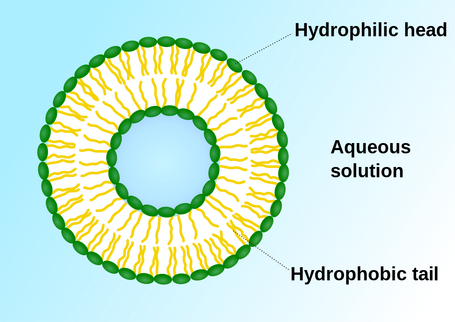
The vesicle consists of a small amount of fluid (and sometimes particles) surrounded by a phospholipid bilayer. This bilayer is made up of the same phospholipids that are found in the cell membrane of the plasma membrane. this is due to the fact that vesicles are actually made from the cell membrane itself!
Nucleus
The Main Function of the Nucleus is to Hold the DNA.
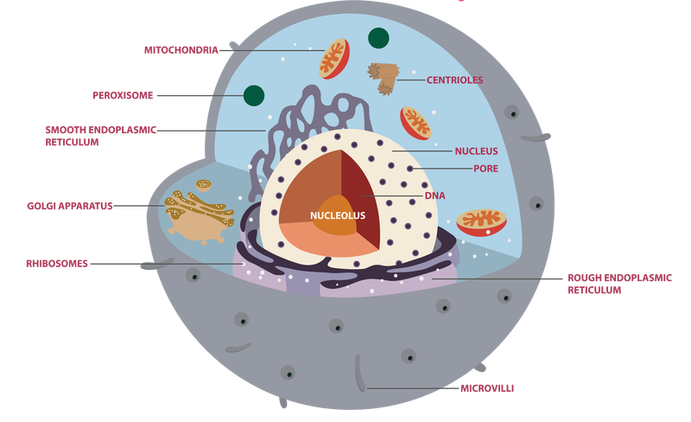
The structure of the nucleus - The nucleus is surrounded by the nuclear envelope, which is essentially a membrane (a phospholipid bilayer) that compartmentalizes (or separates) the nucleus from the rest of the cell. The liquid inside of the nucleus is called the nucleoplasm. The nucleus houses the DNA, which holds the instructions for protein synthesis (as well as other instructions for the cell).
DNA stands for deoxyribonucleic acid. It is the "instruction manual" for the cell. The primary function of the DNA is to provide the instructions for protein synthesis to the cell through the processes of transcription and translation.
Nucleolus
The Main Function of the Nucleolus is to Make Ribosomes
|
The nucleolus is located inside of the nucleus. It is the largest structure residing inside of the nucleus. Its primary function is to make ribosomes.
|
Electron Micrograph of a nucleus and nucleolus in an animal cell.
By Image from An Owner's Guide to the Cell // National Institute of General Medical Sciences, Public Domain, https://commons.wikimedia.org/w/index.php?curid=2101429 |
Ribosomes
The Main Function of a Ribosome is to Be the Site of Protein Synthesis.
After the ribosome is assembled (made) in the nucleolus, it leaves the nucleus. Some ribosomes will end up as "free ribosomes" that remain unattached in the cytosol. Other ribosomes will attach to the nearby Rough Endoplasmic Reticulum.
All ribosomes function as "the site of protein synthesis". Free ribosomes are used as the site for making water-soluble proteins, whereas the ribosomes that are attached to the rough endoplasmic reticulum act as the site for making proteins that will either be incorporated into the cell membrane or will be transported out of the cell (via exocytosis).
All ribosomes function as "the site of protein synthesis". Free ribosomes are used as the site for making water-soluble proteins, whereas the ribosomes that are attached to the rough endoplasmic reticulum act as the site for making proteins that will either be incorporated into the cell membrane or will be transported out of the cell (via exocytosis).
ENDOPLASMIC RETICULUM
There are 2 types of endoplasmic reticulum (ER); the rough endoplasmic reticulum and the smooth endoplasmic reticulum.
The Rough Endoplasmic Reticulum
(The Rough ER)
(The Rough ER)
|
The rough ER gets its name from its 'bumpy' or 'rough' appearance due to ribosomes that are attached to it. In the rough ER, ribosomes are assembled in the nucleolus and then exit the nucleus. Some of these ribosomes then attach themselves to the rough endoplasmic reticulum, where they will act as a "site of protein synthesis" for the cell.
|
The Smooth Endoplasmic Reticulum
(The Smooth ER)
(The Smooth ER)
MITOCHONDRIA
LYSOSOME
PEROXISOME
THE GOLGI BODY
|
The Golgi body (also known as the Golgi apparatus) functions like the "post office" of the cell! the Golgi body functions to modify, package and ship proteins!
The Golgi body is made up of a number of membrane-bound sacs for the proteins to travel through for packaging and processing. The Golgi body also processes and packages lipids inside the cell. |
|
Summary of Structure and Function of Organelles
ORGANELLE or STRUCTURE |
FUNCTION |
SIMILAR TO |
NUCLEUS |
HOLDS THE DNA |
INSTRUCTION MANUAL |
NUCLEOLUS |
MAKES RIBOSOMES |
FACTORY |
MEMBRANE |
PROTECTION - REGULATION OF TRANSPORT |
SKIN |
GOLGI BODY |
MODIFIES, PACKAGES AND SHIPS PROTEINS |
POST OFFICE |
MITOCHONDRIA |
CREATES ENERGY (ATP) |
POWER PLANT |
ROUGH ENDOPLASMIC RETICULUM |
HAS RIBOSOMES |
|
SMOOTH ENDOPLASMIC RETICULUM |
LIPID PRODUCTION AND CALCIUM STORAGE |
|
PEROXISOME |
DETOXIFIES |
GARBAGE DISPOSAL |
LYSOSOME |
DIGESTS UNWANTED SUBSTANCES |
RECYCLING CENTER |
RIBOSOME |
THE SITE OF PROTEIN SYNTHESIS |
ASSEMBLY LINE |
NUCLEOPLASM |
LIQUID OF THE NUCLEUS |
|
NUCLEAR ENVELOPE |
MEMBRANE AROUND THE NUCLEUS |
"SKIN" OF NUCLEUS |
VESICLES |
TRANSPORTATION |
VEHICLES |
CYTOSOL |
LIQUID OF THE CELL THAT LIES INSIDE OF THE CELL MEMBRANE, AND OUTSIDE THE NUCLEUS |

